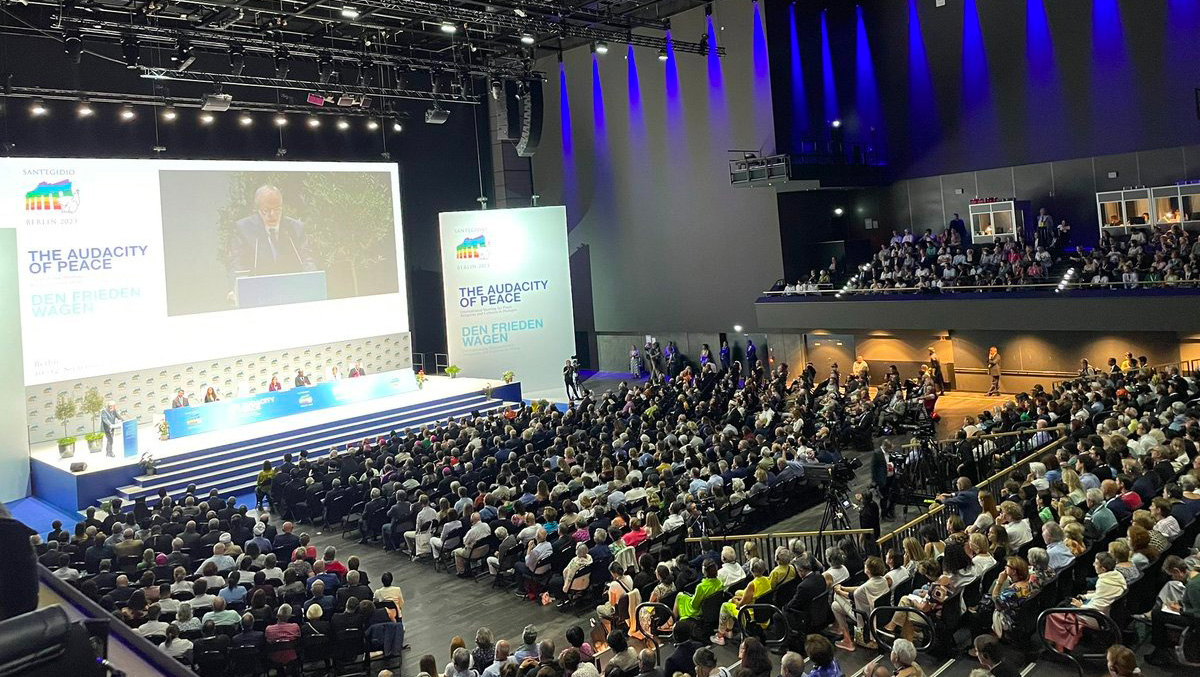
Living together as people of different faiths requires, first and foremost, a reciprocal willingness to listen. And an openness to question one’s own self-understanding and being open to understanding others in their own terms.
Our mutual perceptions are often blurred. Modernization has had great secularizing effects, more in some places than others. But it has also provoked powerful movements of counter-secularization. In some extreme cases, people fight in the name of religions in which they ceased to believe. There are conflicts between communities that have a religious past, but their religious content is of no relevance. Religions that in which people have little faith continue to define communities in which they have much faith. It is therefore essential to distinguish between political movements that may be genuinely inspired by religion and those that use religion as a convenient legitimation for political agendas serving non-religious interests.
In the Muslim world, ideological thought patterns represent the West as selfish, materialistic and dominating. In the West, the equivalent thought patterns perceive Islam as irrational, fanatical and expansionist. In the age of global communication and migration, these thought patterns foster antagonism.
Such perceptions are often imaginary constructs exacerbated by the paradox of globalization. The development of consumerism and planetary televised entertainment has produced unprecedented cultural uniformization. But the more individuals, and people, look alike the more they need to affirm their differences. In many societies, people risk living in the “worst of two worlds”: a culturally homogeneous world and one where seeking identity and community goes the way of hostility towards the other.
While relations between people of fifferent faiths and cultures are strongly influenced by local and regional histories, they are increasingly impacted by world developments. When communities are identified exclusively or even exaggeratedly by their religion, situations tend to become more explosive. Religions appeal to universal loyalties that can be seen, in certain societies, as a cause of tension or conflict. But quite often, they are no more than an intensifying feature of disputes whose main causes are outside religion.
There are cases where a conflict in one place, with its local causes and character, is perceived and instrumentalized as part of a conflict in another. So, enmities in one part of the world spill over into situations of tension in other regions. An act of violence in one place is used to confirm stereotypes of the “enemy” in another place or even provoke revenge attacks elsewhere in the world. Moreover, it is not uncommon to see people unable or unwilling to fight those who caused their anger look for substitutes and easily find them. Sometimes, neighbours hold each other accountable for the wrongs attributed to their co-religionists elsewhere. Unless they are prepared to dissociate themselves publicly from those with whom they share a common faith, they are accused of complicity with them.
Living together in peace requires counteracting these processes. In other words, it may be necessary to “de-globalize interreligious and intercultural tensions”. Attention to the specific local causes of tensions and conflicts helps identifying solutions. This is not possible unless the leaders of both communities refuse to be drawn into others’ conflicts because of uncritical response to calls for solidarity among adherents to one faith. Genuine religious beliefs and convictions can then constitute a basis for critical engagement with human weakness and defective social and economic orders.
The culture of living together is the culture of the dialogue of life. The principles of citizenship, equality, the rule of law and human rights are in the heart of the “dialogue of life”. For people of faiths, it is crucial to affirm the indivisibility of human rights, to reconcile individual rights with those of communities and stand by the victims whatever is their ethnic or religious identity. Thus, human rights advocacy cannot be conditioned by confessional solidarity, no matter how legitimate it can be.
Equally, a lucid understanding of the relationship between violence and religion needs to be the object of renewed attention. At times, there seems to be an impatient tendency to look for an explanation of the criminal attacks in the scriptural or religious justification of violence. Thus, the non-religious factors determining symbolic and historical violence are not adequately examined, let alone exhausted, before addressing the religious dimension. The “anatomy” of violence is privileged over its “genealogy”. When some people hold traditional religious education responsible of spreading a culture of hatred, they fail to see that it is not the traditional religious values that lead people to violence but their loss, without much in counterpart, which explains frustration, grievance and revulsion. Violence cannot be explained by ancestral hatred, for ancestral hatred is reinvented and even fabricated by modern violence. It remains true, however, that tensions and conflicts pertaining to identity and values are more difficult to prevent and resolve because their object is not quantifiable, it is not part of what they have but rather constitutive of what they are.
This is why living together, or the dialogue of life, cannot obey the logic of negotiation. For it implies a preparedness to suspend one’s value judgments and such a suspension invites intellectual humility. Humility is not a notion that most people are inclined to uphold. They may concede it is a virtue embraced only by men and women of deep faith. The defining trait of our age seems to be arrogance, not only among some of those who wield power or accumulate wealth.
Intellectual humility is a necessary condition for dialogue. It is not an invitation to relativism but a reminder that many issues are subject to doubt.
Balancing intellectual humility and moral conviction is a difficult struggle. Respect for other people’s truth claims and willingness to suspend our value-judgments on the beliefs of those with whom we disagree can be salient features of intellectual humility. But humility does not contradict moral certainty. There have been many ways of universalizing and legitimating moral certainty. Some have highlighted the convergence of religious commandments- the main one being the “golden rule’, the principle of treating others as oneself wish to be treated. Others have based their moral certainty on natural law or social functionality.
In conclusion, we need to remind ourselves that neither the historical contingencies nor the differences in colour, ethnicity, language, cultural heritage and religious affiliation among us, militate against our common humanity. But while affirming common humanity, one needs to be wary of faceless or abstract universalism. The space between faceless universalism, prone to hegemonic control, and ethnocentric bigotry and religious exclusivism needs to be widened. This brings me back to where I started. Equal footing and equal participation are a necessary condition for the dialogue of life. For this reason, it is not an act of condescendence or charity by the stronger towards the weaker. In fact, the weaker may well possess the strength, real or potential, of providing legitimacy to the mighty. Moreover, those who think of themselves as invincible need to be reminded that they are vulnerable.
